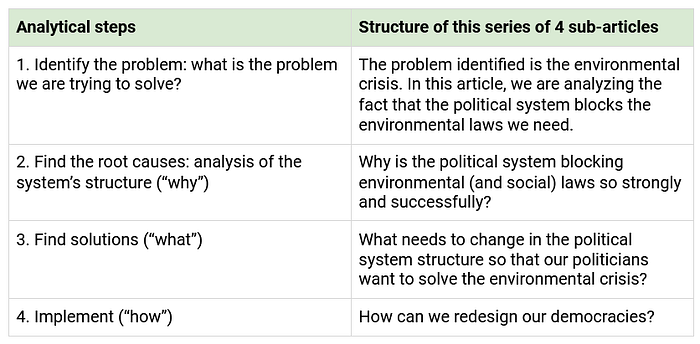A new strategy for ambitious environmental laws
Cet article est aussi disponible en français.
You may agree with me if I said that a well-functioning democracy’s goal is to optimize the long-term well-being of its people (even if this may not be reflected in the system that we call “democracy” today). I hope you would also agree if I said that solving the environmental crisis is a condition for reaching that goal.
Solving the environmental crisis is, however, not our governments’ priority today. Governments are, on the contrary, resisting environmental policies and laws.

If solving the environmental crisis is a condition to achieve the goal of optimizing the long-term well-being of its people, and governments are resisting the changes that could contribute to solving that problem (e.g. environmental laws), then the political system is not fulfilling its (theoretical) goal. When it comes to solving the environmental crisis, the fact that the political system blocks the environmental laws we need is a key (sub-)problem to solve.
We often think that the political system is not fulfilling its goal precisely due to the lack of ambitious environmental and social laws, thus pushing for these laws is common sense. A key question we often fail to ask, however, is why do we need to push so hard? Why are these laws not being implemented already?
I argue in this article — based on Thwink’s work — that change-makers’ efforts to push for environmental (and social) laws are likely doomed to fail as they are not targeting the problem’s root causes. I argue as well that this is a great piece of news, I will try to explain why.
This article discusses:
- why the political system is blocking environmental (and social) laws so strongly and successfully,
- what concretely would need to change in the political system for this to no longer be the case, and
- how to go about bringing that change.
I had never seen an analysis this complete and relevant to inform strategic action, and I thus wanted to share it with you. We will analyze the political system’s structure, following the steps described in the previous article, rephrased as questions to facilitate reading.

This article is part of a series, available here.
Would you like to discuss? Join us
